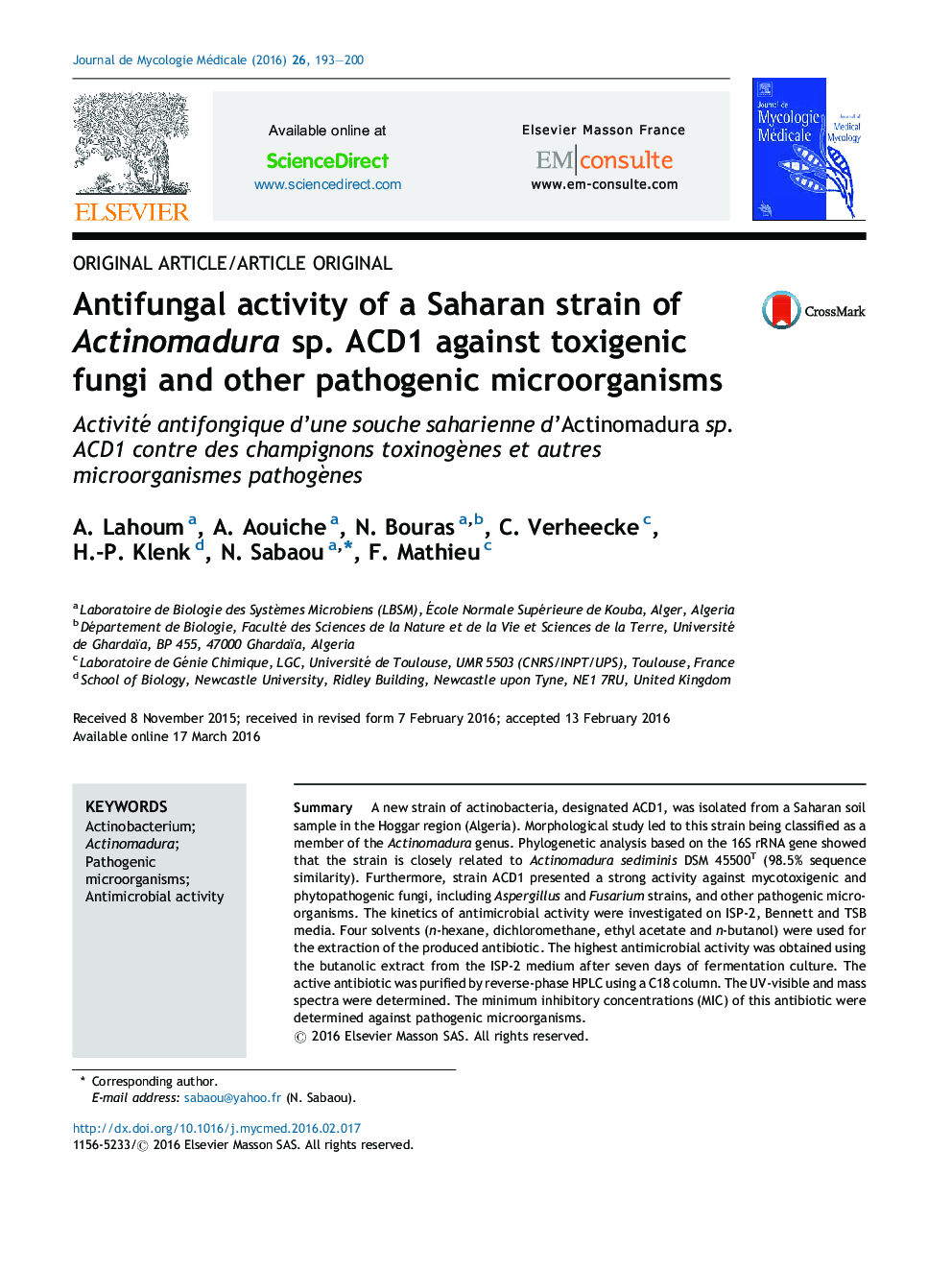| کد مقاله | کد نشریه | سال انتشار | مقاله انگلیسی | نسخه تمام متن |
|---|---|---|---|---|
| 3219042 | 1407142 | 2016 | 8 صفحه PDF | دانلود رایگان |

SummaryA new strain of actinobacteria, designated ACD1, was isolated from a Saharan soil sample in the Hoggar region (Algeria). Morphological study led to this strain being classified as a member of the Actinomadura genus. Phylogenetic analysis based on the 16S rRNA gene showed that the strain is closely related to Actinomadura sediminis DSM 45500T (98.5% sequence similarity). Furthermore, strain ACD1 presented a strong activity against mycotoxigenic and phytopathogenic fungi, including Aspergillus and Fusarium strains, and other pathogenic microorganisms. The kinetics of antimicrobial activity were investigated on ISP-2, Bennett and TSB media. Four solvents (n-hexane, dichloromethane, ethyl acetate and n-butanol) were used for the extraction of the produced antibiotic. The highest antimicrobial activity was obtained using the butanolic extract from the ISP-2 medium after seven days of fermentation culture. The active antibiotic was purified by reverse-phase HPLC using a C18 column. The UV-visible and mass spectra were determined. The minimum inhibitory concentrations (MIC) of this antibiotic were determined against pathogenic microorganisms.
RésuméUne nouvelle souche d’actinobactérie, désignée ACD1, a été isolée à partir d’un échantillon de sol provenant de la région du Hoggar (Algérie). L’étude morphologique de cette souche a permis de la rapprocher du genre Actinomadura. L’analyse phylogénétique basée sur le gène codant pour l’ARNr 16S a montré que la souche-type la plus proche phylogénétiquement est Actinomadura sediminis DSM 45500T (98,5 % de similarité). De plus, la souche ACD1 a présenté une forte activité contre des champignons phytopathogènes et mycotoxinogènes, y compris les souches des genres Aspergillus et Fusarium et d’autres microorganismes pathogènes. Les cinétiques de l’activité antimicrobienne sont réalisées sur les milieux ISP-2, Bennett et TSB. Quatre solvants (le n-hexane, le dichlorométhane, l’acétate d’éthyle et le n-butanol) ont été utilisés pour l’extraction de l’antibiotique produit. La meilleure activité antimicrobienne a été obtenue en utilisant l’extrait butanolique du milieu ISP-2 après sept jours de fermentation. L’antibiotique actif est purifié par HPLC en utilisant une colonne C18. Le spectre UV-visible et le spectre de masse sont déterminés. Les concentrations minimales inhibitrices (CMI) sont réalisées contre des microorganismes pathogènes.
Journal: Journal de Mycologie Médicale / Journal of Medical Mycology - Volume 26, Issue 3, September 2016, Pages 193–200